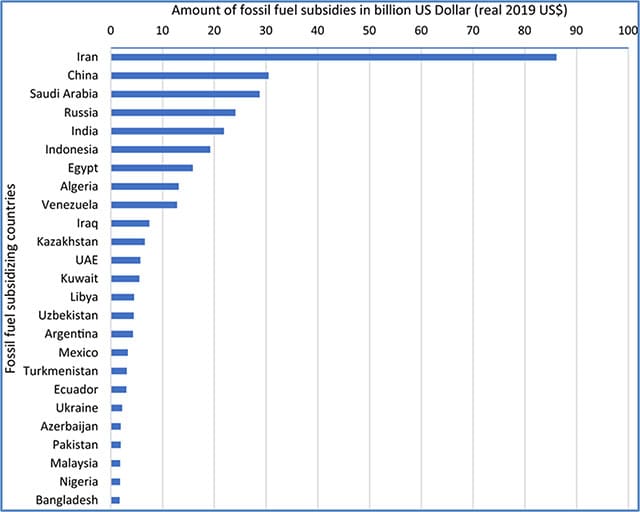Achieving net-zero emissions will require energy transition actions across all sectors and nations
 Achieving net-zero emissions is a critical goal in the fight against climate change. It refers to the balance between the amount of greenhouse gases (GHG) emitted into the atmosphere and the amount removed. A comprehensive set of energy transition actions:
Achieving net-zero emissions is a critical goal in the fight against climate change. It refers to the balance between the amount of greenhouse gases (GHG) emitted into the atmosphere and the amount removed. A comprehensive set of energy transition actions:
- Across most sectors of the economy.
- By almost all nations of the world.
- With leadership from various multi-national organizations.
is required if we are to reach net-zero.
This article is part 2 of a three-part series. Click What actions will achieve net-zero GHG emissions? to read part 1.
Industrial decarbonization
The industrial sector is responsible for 24 percent of global GHG emissions, as illustrated by the Global GHG emissions by Sector chart above. Achieving net-zero emissions requires the following:
- Deploying carbon capture, utilization, and storage (CCUS) technologies in industrial processes, such as oil & natural gas, cement, steel, and chemical production.
- Implementing emerging production technologies with lower GHG emissions.
- Researching ways to use more captured CO2 in commercial applications.
- Increasing the use of recycled materials.
- Adopting more circular economy concepts.
- Improving energy efficiency in industrial processes.
Throwing up roadblocks to industrial investments is counter-productive to achieving net-zero.
Phasing out fossil fuel subsidies
Governments must eliminate subsidies supporting fossil fuel production, refining, and consumption. Many nations operate shockingly expensive consumption subsidies.
Redirecting these financial resources towards:
- Debt repayment and infrastructure improvement can improve the lives of many citizens.
- Renewable energy research, development, and deployment can accelerate the transition to a low-carbon economy.
The chart below illustrates the enormity of these fossil fuel consumption subsidies in some countries.

Source: Ranking the fossil fuel subsidizing countries in 2019, ResearchGate, January 2022
These national subsidies encourage energy waste, which undermines net-zero goals. Political realities and the time required for consumers to adjust to higher prices suggest that phasing out subsidies will take time.
Energy efficiency and conservation
Improving energy efficiency in buildings, industries, and appliances is a cost-effective way to reduce GHG emissions. This transition involves:
- Implementing stricter energy efficiency standards.
- Further developing and promoting energy-efficient technologies.
- Retrofitting existing infrastructure.
- Raising awareness about energy conservation practices.
- Reducing energy waste through smart grid systems and energy management technologies.
The chart below indicates significant global spending on energy efficiency improvements. How sufficient this expenditure is to achieve net-zero is unclear.

Source: In charts: Global progress on energy efficiency, Financial Times, December 5, 2021
Many households and businesses think that their contributions to energy efficiency and conservation are so small as to be immaterial. This unfortunate thinking and resistance to change slow the transition to net-zero.
Research and innovation
Continued investment in research and development is vital for achieving net-zero emissions. Emerging technologies that can benefit from more funding include:
- Many ideas to advance energy storage cost and efficiency.
- Cost reduction of carbon capture and storage.
- Direct air capture of GHG emissions.
- Innovation in sustainable agriculture.
- Advances in air and rail transportation.
- Revised industrial processes, especially steel and cement production.
- Creating valuable chemicals from captured O2.
Some have discounted the value of breakthrough technologies in addressing climate change. However, breakthrough technologies have solved all the problems humanity has encountered in the past. Climate change is no different.
Collaboration between governments, academia, and the private sector will drive innovation and scale up promising solutions.
Sustainable land use, ocean use and agriculture
Land use, ocean use and agriculture contribute to GHG emissions through:
- Deforestation – Reduces desirable CO2 capture.
- Livestock production – Generates significant methane emissions.
- Nitrogen fertilizer use – Generates nitrous oxide (N2O) emissions.
- Ocean pollution – Undermines the ability of the oceans to sequester carbon.
Protecting and restoring forests, reducing ocean pollution, promoting sustainable agriculture practices, and reducing food waste are essential for net-zero emissions. Implementing regenerative agricultural techniques, such as organic farming, agroforestry, and precision farming, can help sequester carbon in soils and reduce GHG emissions. New and improved plant species can reduce water, fertilizer and pesticide usage.
Those who suggest not harvesting forests at all, ceasing livestock production, and abandoning fertilizer don’t recognize that these actions lead to reduced quality of life and perhaps mass starvation.
Yogi Schulz has over 40 years of information technology experience in various industries. Yogi works extensively in the petroleum industry. He manages projects that arise from changes in business requirements, the need to leverage technology opportunities, and mergers. His specialties include IT strategy, web strategy and project management.
For interview requests, click here.
The opinions expressed by our columnists and contributors are theirs alone and do not inherently or expressly reflect the views of our publication.
© Troy Media
Troy Media is an editorial content provider to media outlets and its own hosted community news outlets across Canada.

